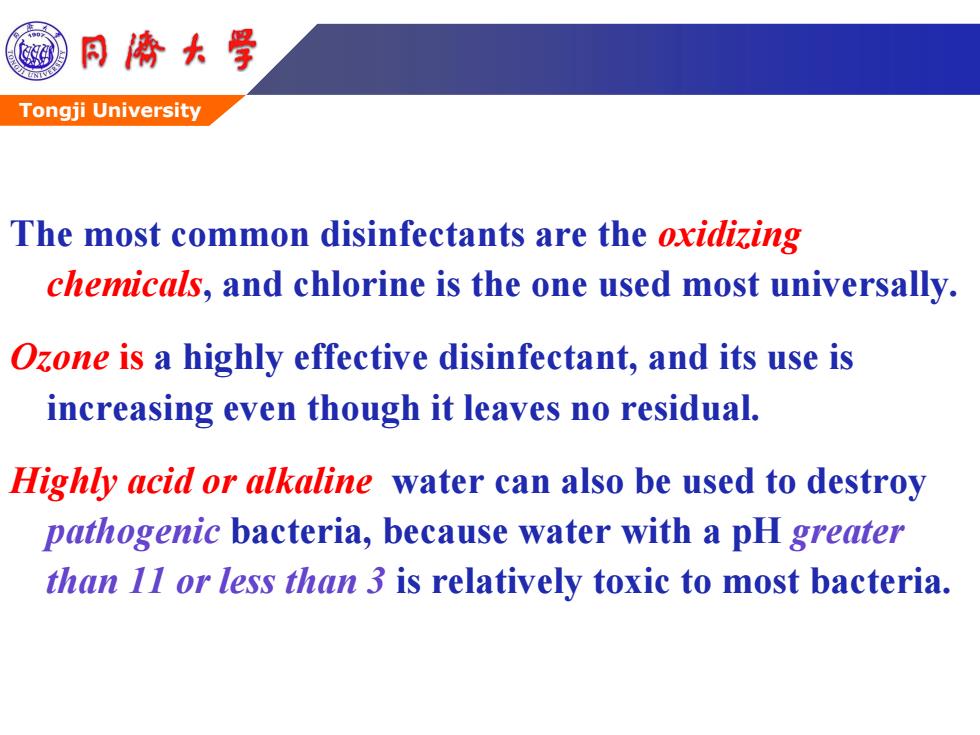
同傍大学 Tongji University The most common disinfectants are the oxidizing chemicals,and chlorine is the one used most universally. Ozone is a highly effective disinfectant,and its use is increasing even though it leaves no residual. Highly acid or alkaline water can also be used to destroy pathogenic bacteria,because water with a pH greater than 11 or less than 3 is relatively toxic to most bacteria
Tongji University The most common disinfectants are the oxidizing chemicals, and chlorine is the one used most universally. Ozone is a highly effective disinfectant, and its use is increasing even though it leaves no residual. Highly acid or alkaline water can also be used to destroy pathogenic bacteria, because water with a pH greater than 11 or less than 3 is relatively toxic to most bacteria
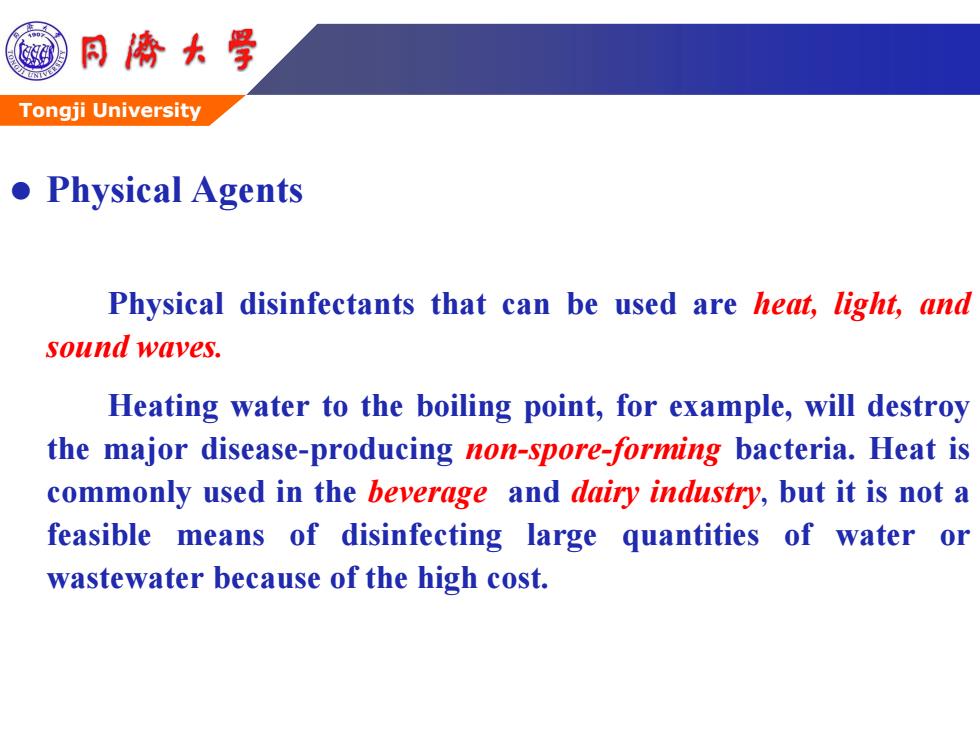
同©大学 Tongji University Physical Agents Physical disinfectants that can be used are heat,light,and sound waves. Heating water to the boiling point,for example,will destroy the major disease-producing non-spore-forming bacteria.Heat is commonly used in the beverage and dairy industry,but it is not a feasible means of disinfecting large quantities of water or wastewater because of the high cost
Tongji University Physical Agents Physical disinfectants that can be used are heat, light, and sound waves. Heating water to the boiling point, for example, will destroy the major disease-producing non-spore-forming bacteria. Heat is commonly used in the beverage and dairy industry, but it is not a feasible means of disinfecting large quantities of water or wastewater because of the high cost
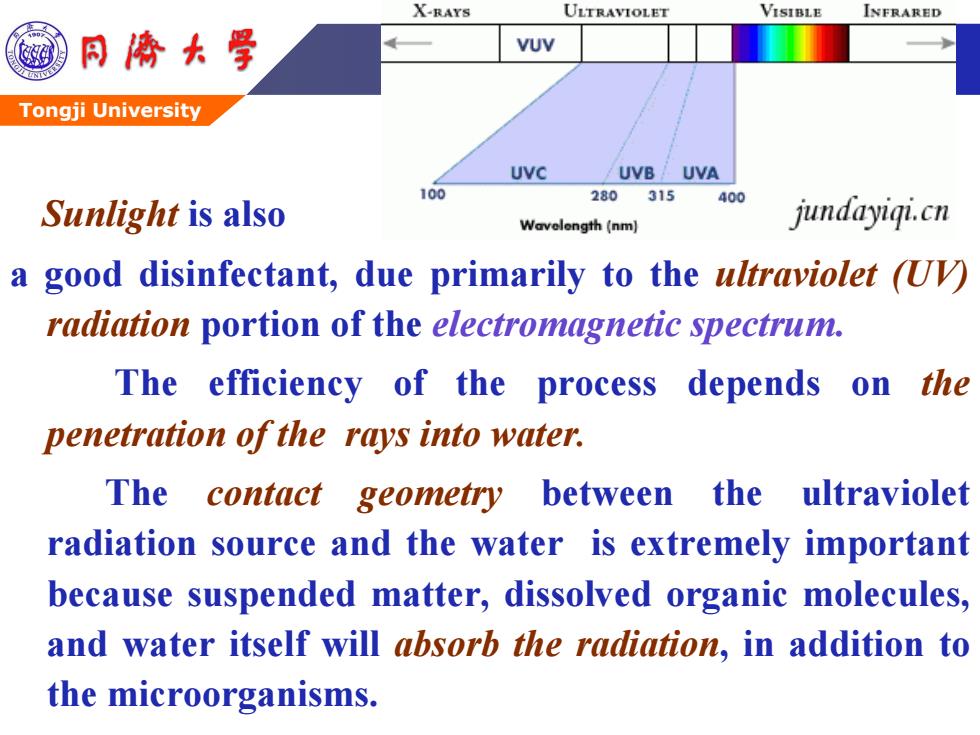
X-RAYS ULTRAVIOLET VISIBLE INFRARED 同海大学 VUV Tongji University UVC UVB UVA 100 280 315 400 Sunlight is also Wavelongth (nm) jundayiqi.cn a good disinfectant,due primarily to the ultraviolet (Uv) radiation portion of the electromagnetic spectrum. The efficiency of the process depends on the penetration of the rays into water. The contact geometry between the ultraviolet radiation source and the water is extremely important because suspended matter,dissolved organic molecules, and water itself will absorb the radiation,in addition to the microorganisms
Tongji University Sunlight is also a good disinfectant, due primarily to the ultraviolet (UV) radiation portion of the electromagnetic spectrum. The efficiency of the process depends on the penetration of the rays into water. The contact geometry between the ultraviolet radiation source and the water is extremely important because suspended matter, dissolved organic molecules, and water itself will absorb the radiation, in addition to the microorganisms
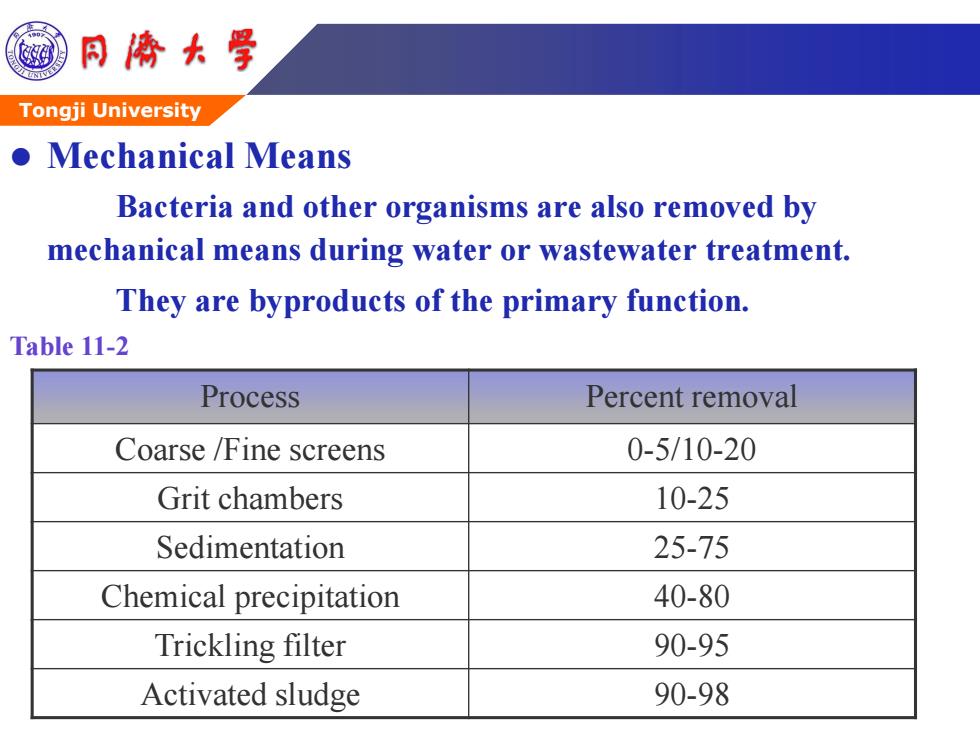
同傍大学 Tongji University ●Mechanical Means Bacteria and other organisms are also removed by mechanical means during water or wastewater treatment. They are byproducts of the primary function. Table 11-2 Process Percent removal Coarse /Fine screens 0-5/10-20 Grit chambers 10-25 Sedimentation 25-75 Chemical precipitation 40-80 Trickling filter 90-95 Activated sludge 90-98
Tongji University Mechanical Means Bacteria and other organisms are also removed by mechanical means during water or wastewater treatment. They are byproducts of the primary function. Process Percent removal Coarse /Fine screens 0-5/10-20 Grit chambers 10-25 Sedimentation 25-75 Chemical precipitation 40-80 Trickling filter 90-95 Activated sludge 90-98 Table 11-2
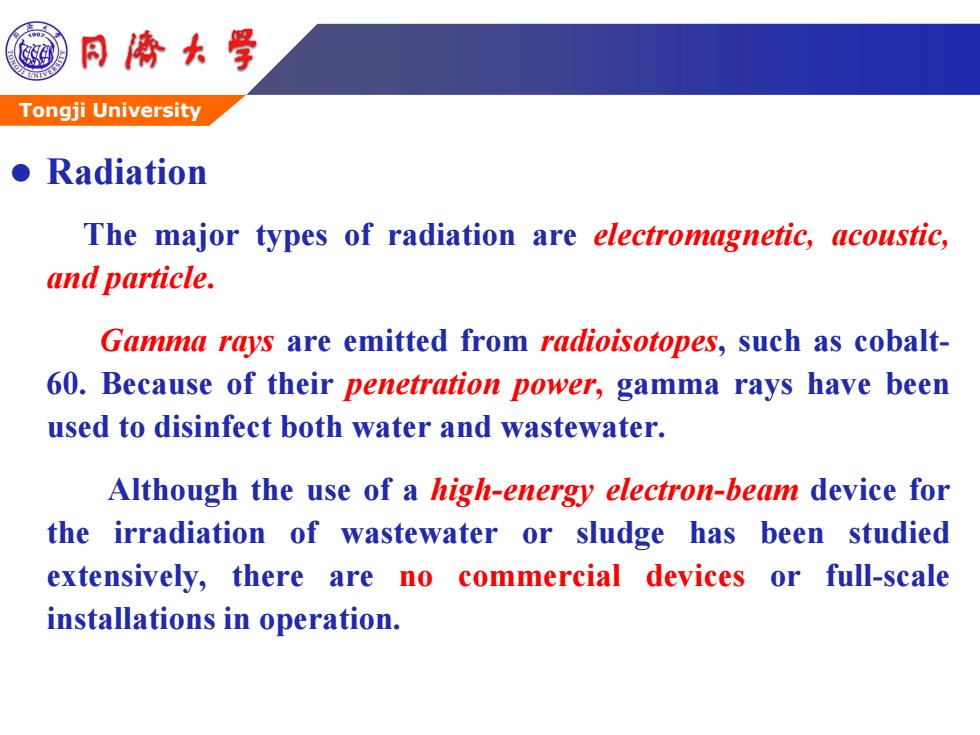
同傍大学 Tongji University ●Radiation The major types of radiation are electromagnetic,acoustic, and particle. Gamma rays are emitted from radioisotopes,such as cobalt- 60.Because of their penetration power,gamma rays have been used to disinfect both water and wastewater. Although the use of a high-energy electron-beam device for the irradiation of wastewater or sludge has been studied extensively,there are no commercial devices or full-scale installations in operation
Tongji University Radiation The major types of radiation are electromagnetic, acoustic, and particle. Gamma rays are emitted from radioisotopes, such as cobalt- 60. Because of their penetration power, gamma rays have been used to disinfect both water and wastewater. Although the use of a high-energy electron-beam device for the irradiation of wastewater or sludge has been studied extensively, there are no commercial devices or full-scale installations in operation